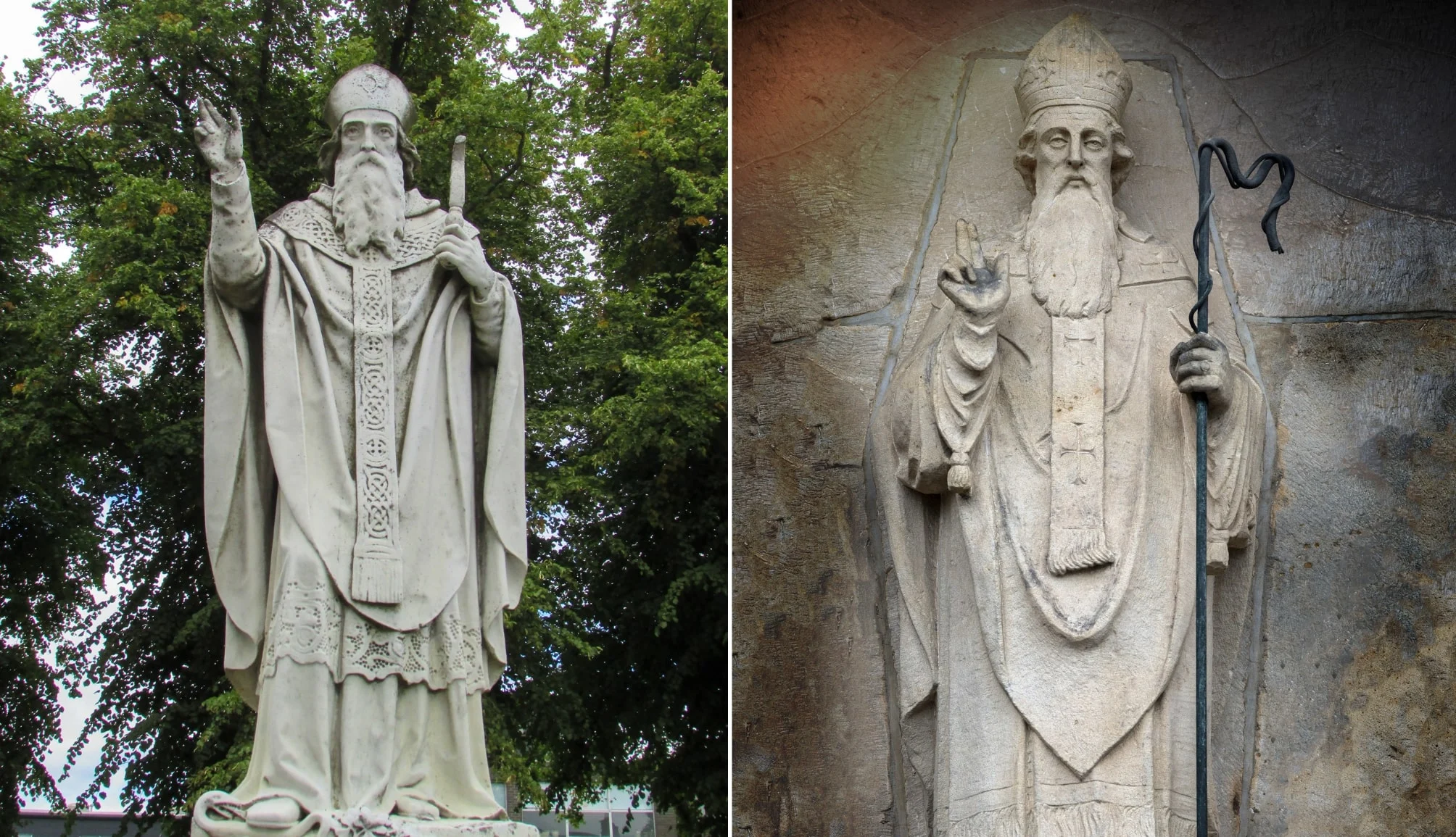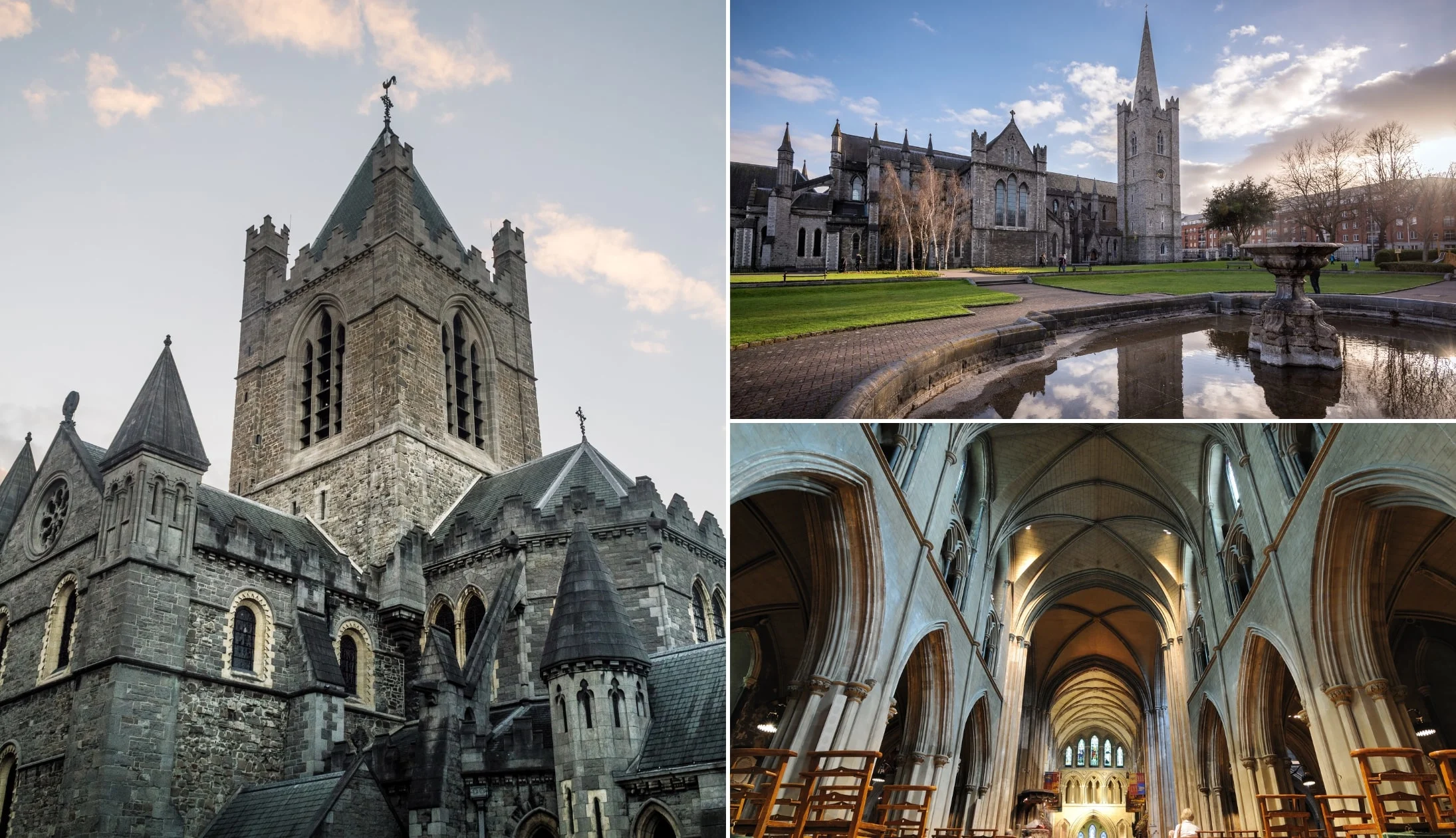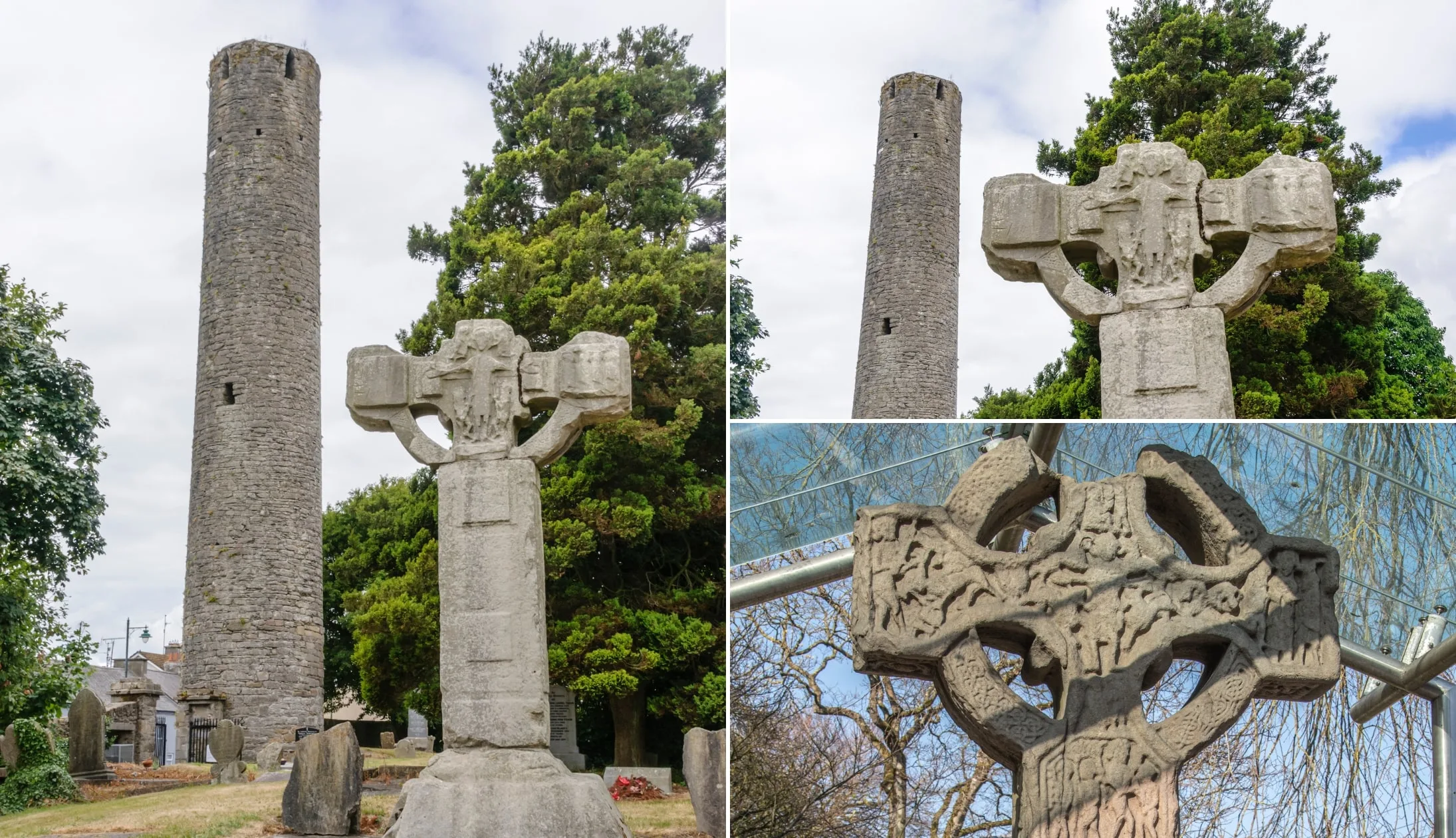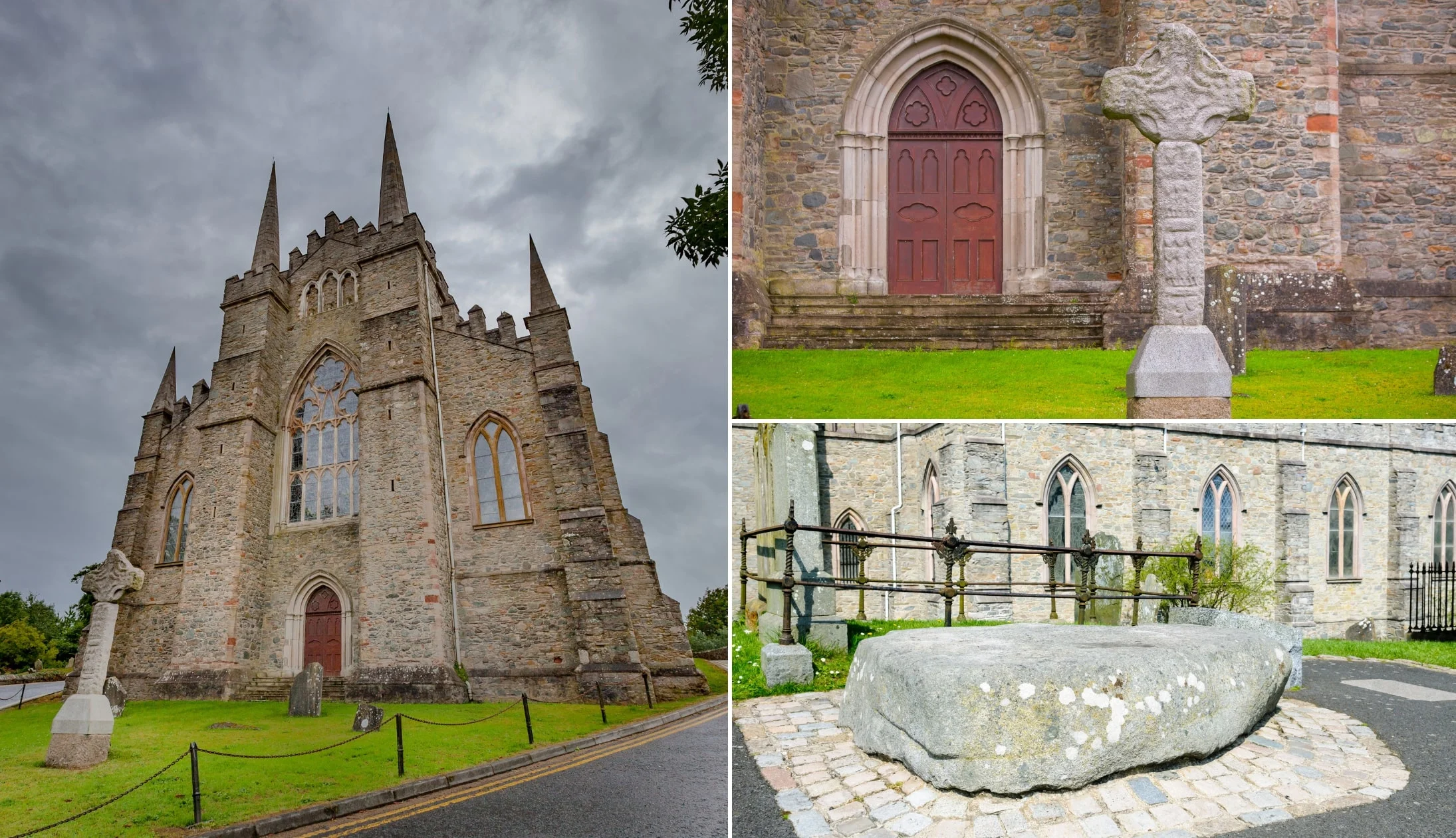Who was St. Patrick? Was he really British?! What happened with the pirates?!
In the lead up to St. Patrick’s Day, we’re asked about the story of St. Patrick over and over, and it’s one that we enjoy telling.
In this guide, you’ll find facts without the fluff, from his early days to his passing and everything in between.
Some quick need-to-knows about the story of St. Patrick

Photos via Shutterstock
Before we answer the question ‘Who was St. Patrick? in detail, let’s get you up-to-speed nice and quickly with the bullet points below:
1. He is Ireland’s patron Saint
St. Patrick is the Patron Saint of Ireland, and was revered as such as early as the seventh century. He’s now an integral part of Irish culture and one of Christianity’s most widely known figures.
2. He was born in Britain… kind of
Well, he isn’t really ‘British’ since he was officially a Roman citizen and at the time he was born, the landmass of Britain was ruled by the Roman Empire.
3. He was brought to Ireland by pirates
At the tender age of 16, Patrick was captured by pirates and brought over to Ireland where he lived in servitude for six years.
4. He is believed to be buried in Down
He died in around 461 and is believed to be buried in Saul, Co. Down, at Saul Monastery where he finally ended his missionary work. This site is now where Down Cathedral sits.
5. Celebrated on March 17th
March 17th, 461 is said to be the date of his death and has become the celebration day around the world of his extraordinary life.
Who was St. Patrick: The facts and the legends

Photos via Shutterstock
The story of St. Patrick is an interesting one and it’s peppered with a mix of fact and fiction.
Below, you’ll find a detailed answer to the question ‘Who was St. Patrick?.
Early life in late Roman Britain

Photos via Shutterstock
One of the more surprising aspects of St. Patrick’s life is that he wasn’t Irish (see our St. Patrick’s facts article for more like this).
He was born in Roman Britain during the time of Rome’s collapse in Europe and would have been known as Patricius.
So while it was technically British soil, at this time period it was not the land of the Royal Family, cups of tea etc that we know today and was a pretty barren place of scattered settlements.
Patrick was therefore a Roman citizen of Britain and he was born into a wealthy family in AD385, though it’s not known exactly where.
‘Bannaven of Taberniae’ is often the name given to the location of his birth and there are several theories as to where this could be.
Scholars have advanced claims for Dumbarton, Ravenglass and Northhampton, alongside various regions in Brittany, Scotland and Wales.
His capture by pirates

St. Patrick’s Cathedral in Dublin (via Shutterstock)
The story of St. Patrick takes an interesting twist when he reaches the age of 16.
His father was a magistrate named Calporn and, according to legend, his mother was Conchessa, a niece of the famous St. Martin of Tours (316-397). Apparently at this time, the young Patrick had no particular interest in religion.
At the age of 16, he was taken prisoner by a group of Irish raiders who were attacking his family’s estate and was transported to Ireland and then sold into slavery.
In Ireland, Patrick was sold to a local chieftain named Miliue of Antrim (also known as Miliucc) who used him as a shepherd and sent him out to tend to the flocks of sheep in the nearby Valley of the Braid.
For six years he served Miliue, often herding the flocks nearly naked in all kinds of weather and it was during this time that he turned to Christianity, something that gave him solace during a difficult time period.
An interest in Christianity awakens and his escape

Photos via Shutterstock
Patrick’s belief in God became stronger by the day and eventually he received a message in a dream, a voice spoke to him saying “Your hungers are rewarded. You are going home. Look, your ship is ready.”
Heeding the call, Patrick then walked nearly 200 miles from County Mayo, where it’s believed he was being held, to the Irish coast (most likely Wexford or Wicklow).
He attempted to journey back on a merchant ship heading to Britain but was refused by the captain. At that point, he prayed for help and finally the captain of the ship relented and allowed him to come aboard.
At last, three days later Patrick returned to British shores. After his escape to Britain, Patrick reported that he experienced a second revelation, that an angel in a dream told him to return to Ireland as a Christian missionary.
Soon after, Patrick began a period of religious training that would last over 15 years, including time spent in Gaul (modern-day France) where he was ordained into the priesthood.
Return to Ireland as a missionary and his impact

Photos via Shutterstock
St. Patrick was not the first missionary to Ireland, but nevertheless he was sent to Ireland with a dual mission – to minister to Christians already living in Ireland and to begin to convert the non-Christian Irish.
After much preparation, he landed in Ireland in either 432 or 433 somewhere on the Wicklow coast.
Already familiar with the Irish language and culture from the earlier time in his life, Patrick decided to incorporate traditional Irish rituals into his Christianity lessons rather than attempting to eradicate native Irish beliefs (largely pagan at the time).
An example of this is using bonfires to celebrate Easter, as the Irish people were used to honouring their gods with fire.
He also superimposed a sun, a powerful Irish symbol, onto the Christian cross, thus creating what is now known as the Celtic Cross. He did that simply so the veneration of the symbol would seem more natural to the Irish.
Gestures like these alongside his normal missionary work are what began to endear Patrick to the native population.
Later life, legacy and death

Where St. Patrick is believed to be buried (via Shutterstock)
The story of St. Patrick ends at what is now Down Cathedral.
Patrick went on to found many Christian communities throughout Ireland, most notably the church in Armagh that became the ecclesiastical capital of the churches of Ireland.
The Celtic Church he founded was different in several ways from the church of Rome, most notably in its inclusion of women in church hierarchy, the dating of Easter, the tonsure of monks and the liturgy.
During his life, plenty of legends were said to have taken place (which you’ll have definitely heard about!), including the banishing of snakes from Ireland and Patrick’s 40-day fast at the summit of Croagh Patrick.
Whether those stories are true or not is up for debate, but what’s important is that St. Patrick changed the lives and futures of the people he had once walked among as a slave.
It’s believed that he died around the year 461 at Saul in modern-day County Down. On March 17th, of course.
FAQs about who was St. Patrick
We’ve had a lot of questions over the years asking about everything from ‘Is the story of St. Patrick fact or fiction?’ to ‘Did he really banish the snakes?’.
In the section below, we’ve popped in the most FAQs that we’ve received. If you have a question that we haven’t tackled, ask away in the comments section below. Here are some related reads you should find interesting:
- 73 Funny St. Patrick’s Day Jokes For Adults And Kids
- The Best Irish Songs And The Best Irish Films Of All Time For Paddy’s Day
- 8 Ways That We Celebrate St. Patrick’s Day In Ireland
- The Most Notable St. Patrick’s Day Traditions In Ireland
- 17 Tasty St. Patrick’s Day Cocktails To Whip Up At Home
- How To Say Happy St. Patrick’s Day In Irish
- 5 St. Patrick’s Day Prayers And Blessings For 2024
- 17 Surprising Fact’s About St. Patrick’ Day
- 33 Interesting Facts About Ireland
Who is Saint Patrick and what did he do?
St. Patrick is Ireland’s Patron Saint. He brought Christianity to the people of Ireland and is celebrated every year on March 17th.
What is St. Patrick best known for?
St. Patrick is arguably best know for banishing the snakes from Ireland, but that isn’t actually true. He’s also well known for introducing Christianity to Ireland.
Why did St. Patrick become famous?
St. Patrick would have travelled the length and breath of Ireland while spreading the word of God. He had many tales attached to him, which would have also helped with his notoriety.
Keith O’Hara has lived in Ireland for 35 years and has spent most of the last 10 creating what is now The Irish Road Trip guide. Over the years, the website has published thousands of meticulously researched Ireland travel guides, welcoming 30 million+ visitors along the way. In 2022, the Irish Road Trip team published the world’s largest collection of Irish Road Trip itineraries. Keith lives in Dublin with his dog Toby and finds writing in the 3rd person minus craic altogether.

